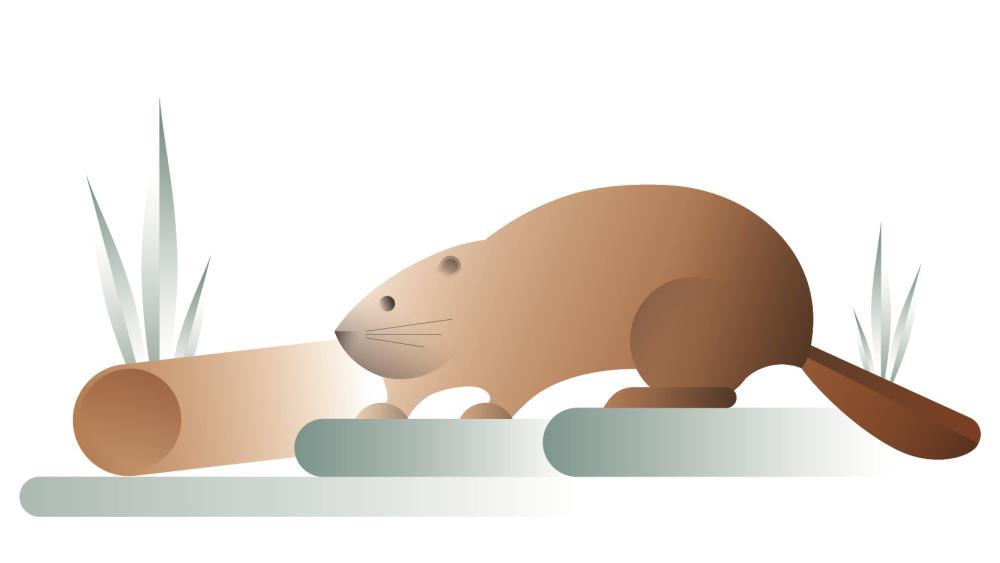The population abundance of large freshwater animals such as sturgeons, giant catfish, river dolphins, hippos, crocodylians and large turtles has declined sharply worldwide, as has the size of their distribution areas. While the causes of the declines of these megafauna have been frequently investigated, our knowledge of the impacts of megafaunal loss in freshwater ecosystems remains limited. Researchers from IGB in cooperation with colleagues from the Humboldt Universität zu Berlin, the Aarhus University, the Senckenberg Society for Nature Research and the University of Granada, demonstrate that native megafauna shape habitat structure and can promote biodiversity in freshwaters. Protecting and reinstating these species can therefore contribute to ecosystem restoration of inland waters.
Freshwater megafauna are larger animals that can reach a maximum body weight of 30 kilograms or more, including 134 fishes, 47 reptiles, 33 mammals and two amphibians. These animals are among the world's most threatened species due to overexploitation, dam construction, and habitat degradation.
57 percent of large freshwater species Vulnerable, Endangered or Critically Endangered
Indeed, 57 percent of all assessed freshwater megafauna species are evaluated as Vulnerable, Endangered or Critically Endangered in the IUCN Red List of Threatened Species. Worldwide, freshwater megafauna populations declined by 88 percent between 1970 and 2012. Building on these previous results, this new study published in Biological Reviews shows just how important these animals are for freshwater ecosystems.
Stochastic disturbances are desirable in nature, but are often suppressed in freshwaters due to human influence
Natural rivers, lakes and wetlands are very dynamic ecosystems. They are subject to a variety of stochastic disturbances caused by changes in flow and by animal activities. In freshwater ecosystems shaped by humans, such disturbances are often suppressed, e.g. by river regulation and fragmentation or due to the loss of (large) animals and their activities.
"It sounds like a paradox, but random disturbances are essential for functioning ecosystems. Large freshwater animals create and maintain various habitats, contribute to the exchange of nutrients between habitats and have major impacts on trophic interactions. Protecting and restoring their populations also helps to enhance ecological complexity of freshwater ecosystems that have become homogeneous due to human intervention – in other words, to increase their structural and biological diversity," said Dr Fengzhi He, guest scientist at IGB and the lead author of the study.
Burrowing, wallowing, building dams and nests: Large animals provide diverse habitat structures
"In fact, water bodies and the surrounding floodplains and wetlands with megafauna are often geomorphologically and ecologically more heterogeneous than those in which megafauna are extirpated," added Prof. Sonja Jähnig, scientist at IGB and senior author of the study.
Some freshwater megafauna species, such as the Eurasian beaver and the North American beaver, change the extent and volume of water storage of water bodies through their activities. They build dams that raise water levels and transform riparian zones and surrounding land into open-water areas and wetlands. The surface area of open water can increase by more than an order of magnitude compared to conditions prior to beaver modification. Beavers also excavate channels, as an impressive example in Miquelon Lake Provincial Park in Alberta, Canada, shows: over 1,700 beaver channels with a total length of almost 40 kilometers in an area of 13 square kilometers, increasing the wetland perimeter to five times of its original length.
Hippos and crocodylians also create channels. Hippos often use the same paths between their feeding and resting habitats. These paths may develop into new water channels due to flooding and repeated trampling. Hippos, water buffalo, tapirs, and crocodylians contribute to making water holes and pools larger and deeper by wallowing. These habitats created and maintained by
large herbivores and predators are important for small aquatic and semi-aquatic species, particularly during dry seasons. Their movements between land and water also change the bank structures.
Material flows between water, land and sea: Hippos and beavers bring large amount of biomass to the water
Freshwater ecosystems are embedded in landscapes and are often connected to the sea. Many megafauna species are highly mobile and use different ecosystems. This applies in particular to semi-aquatic animals that feed on terrestrial resources but excrete in the water. In a previous study on the East African Mara River, it is estimated that the hippos living there discharge 36,200 kg of excrement into the water every day.
Another example of the displacement of biomass is the beaver: researchers estimate that beaver colonies on average remove 8,000 kg of trees per year, of which almost 90 % is used to build dams. The activities of beavers thus profoundly increase the input of nutrients and woody biomass into freshwaters. Moreover, large migratory fish such as sturgeons and salmons also contribute to the exchange of biomass and nutrients between freshwaters and the sea.
"Large freshwater animals are therefore not only important as charismatic flagship species for conservation, but also as an essential part of the biocoenoses for a living and diverse environment," said Sonja Jähnig.
Considering the potential of megafauna as "real" troublemakers
In addition to the benefits, the researchers also name and quantify the potentially detrimental effects of aquatic megafauna for humans in their overview study: competition for resources and habitat, damage to natural assets and the risk to human life. Beavers, hippos, crocodiles and river dolphins in particular have the potential to cause detrimental effects. "These potential impacts must be taken into account when reinstating species, firstly to achieve a positive overall benefit and secondly to increase public acceptance of nature conservation measures," said Fengzhi He.


